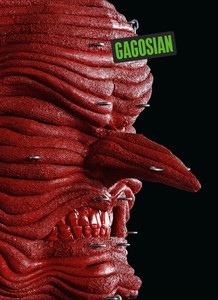
Now available
Gagosian Quarterly Fall 2022
The Fall 2022 issue of Gagosian Quarterly is now available, featuring Jordan Wolfson’s House with Face (2017) on its cover.
The veins of water that pour from the earth flow in trickles that merge, like the branches in the trunk, like the fingers in the palm of a hand, like the bronze in the matrix of a tree.
—Giuseppe Penone
Throughout his fifty-year career, Giuseppe Penone has employed a wide range of materials and forms in an exploration of the fundamental language of sculpture. A protagonist of Arte Povera, Penone explores respiration, growth, and aging—among other involuntary processes—to create an expansive body of work including sculpture, performance, works on paper, and photography.
Penone’s early performance-based works evolved in direct response to the forests near his native village of Garessio, Italy, where he interacted with trees, water, and marble. In the Alpi Marittime (Maritime Alps) works (1968), his gestures and interventions left physical traces over extended periods of time: tree trunks were distorted by copper wire, stones, and bronze casts of the artist’s hand; mechanisms made of ropes and deer hides reacted to the weather; and casts of Penone’s face, hands, and feet were immersed in a stream bed.
In 1969 Penone created the first of his Alberi (Trees): “stripped” trees made by carving into mature timbers and removing the wood along the outer growth rings to reveal the memory of a sapling at the core of the trunk. This ongoing series has taken on various permutations as Penone refines his techniques and experiments with different sizes and installations. In 1970 he even carved an Albero in the presence of an audience, merging sculpture and performance. This same year he made the Rovesciare i propri occhi (Reversing One’s Eyes) works, in which he wore custom-made mirrored contact lenses and had himself photographed. The lenses, though they deprived the artist of his own gaze, allowed him to objectively record images, literally reflecting his surroundings.
During this period Penone also began to explore different ways of documenting his work, as well as his body’s interactions with sculpture. In the Svolgere la propria pelle (To Unroll One’s Skin) series (1970–71), he captured the intricate patterns of rock and bark, skin and hair, through frottage (taking rubbings on sheets of paper), imprints (pressing his body into surfaces), and photography. Then, with the Soffi (Breath) works (1977–), Penone attempted to translate into sculpture the ephemeral phenomenon of breath. He took photographs of light powder that he had blown into the air and translated the cloud-like forms into bronze sculptures, drawings, and vase-like constructions.
Essere fiume (To be a River, 1981) marked an important turning point in Penone’s practice. Extracting chunks of stone or marble from the source of a river, he carved them so that they resembled the smaller, smoother stones at the bottom of the riverbed, mimicking the effects of water on the rocks’ shape and size. Then, returning to an investigation of the figure, Penone began the Gesti vegetali (Vegetal Gestures) works (1982–), hollow anthropomorphic sculptures whose forms were based on single gestures or movements.
In the 1990s Penone worked on the Anatomie (Anatomies, 1992–), which included Carrara marble and other stones carved in high relief to echo vascular and muscular systems, as well as the Propagazioni (Propagations, 1995), a series of drawings based on the concentric linear patterns of a fingerprint. Since then he has continued to expand upon many of his earlier series and to work on the Idee di pietra (Ideas of Stone) sculptures (2003–), in which he juxtaposes rocks and trees to highlight the balance between verticality and horizontality and the interplay of gravity and growth. Penone has also designed two gardens, one in Turin and one in the Reggia di Venaria in Piedmont.
In Penone’s work, sculptural transformations draw the viewer’s attention to details that have long existed but are easily overlooked. By bringing the grandeur—as well as the modesty and intimacy—of raw but also cultural material into various settings, Penone raises questions about sculpture and its essence.
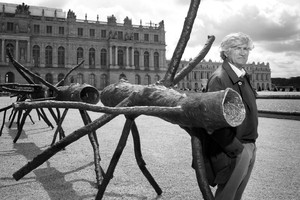

The Fall 2022 issue of Gagosian Quarterly is now available, featuring Jordan Wolfson’s House with Face (2017) on its cover.

Le Couvent Sainte-Marie de La Tourette, in Éveux, France, is both an active Dominican priory and the last building designed by Le Corbusier. As a result, the priory, completed in 1961, is a center both religious and architectural, a site of spiritual significance and a magnetic draw for artists, writers, architects, and others. This fall, at the invitation of Frère Marc Chauveau, Giuseppe Penone will be exhibiting a selection of existing sculptures at La Tourette alongside new work directly inspired by the context and materials of the building. Here, Penone and Frère Chauveau discuss the power and peculiarities of the space, as well as the artwork that will be exhibited there.
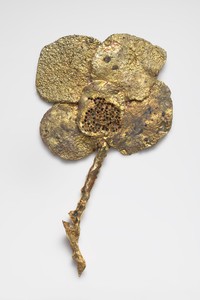
As spring approaches in the Northern Hemisphere, Sydney Stutterheim reflects on the iconography and symbolism of the season in art both past and present.
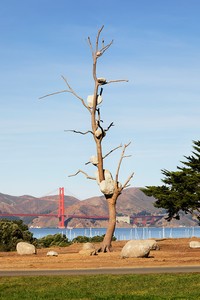
Elizabeth Mangini writes on Giuseppe Penone’s installation of two sculptures at San Francisco’s Fort Mason.
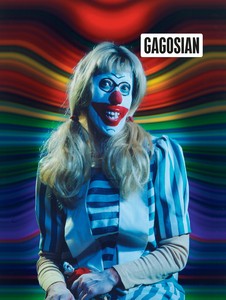
The Spring 2020 issue of Gagosian Quarterly is now available, featuring Cindy Sherman’s Untitled #412 (2003) on its cover.
An outdoor installation by Giuseppe Penone in San Francisco’s historic Fort Mason features two life-size bronze sculptures cast from fallen trees. The project continues the artist’s long investigation of the perpetual give-and-take between humans and nature. In this video, Penone discusses what drew him to this landscape and the concepts behind the installation.
Gagosian director Pepi Marchetti Franchi speaks about Giuseppe Penone’s recent exhibition in San Francisco, detailing the various works and their relationships to the artist’s long-standing sculptural practice.
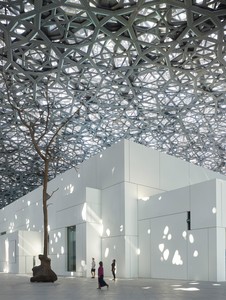
One year after the opening of the Louvre Abu Dhabi, Jean Nouvel and Giuseppe Penone sat down with Alain Fleischer, Pepi Marchetti Franchi, and Hala Wardé to reflect on how the museum and Penone’s commissioned artworks for the space came to be.
Jenny Saville reveals the process behind her new self-portrait, painted in response to Rembrandt’s masterpiece Self-Portrait with Two Circles.
Giuseppe Penone discusses his new monograph, The Inner Life of Forms, with the book’s editor Carlos Basualdo, senior curator of contemporary art at the Philadelphia Museum of Art, at the Greene Space, New York. Hosted by art critic Deborah Solomon.
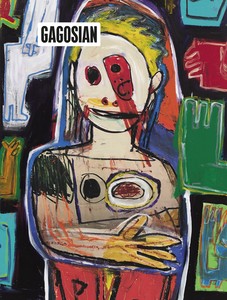
The Winter 2018 issue of Gagosian Quarterly is now available. Our cover this issue comes from High Times, a new body of work by Richard Prince.
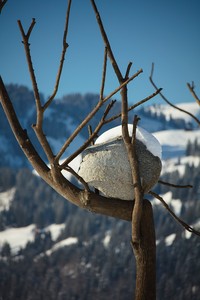
In the small skiing village of Gstaad, among the towering mountains of the Swiss Alps, lies a surprising and ambitious exhibition of sculpture by Giuseppe Penone. Susan Ellicott tells the story of how this installation came to be.
Request more information about
Giuseppe Penone